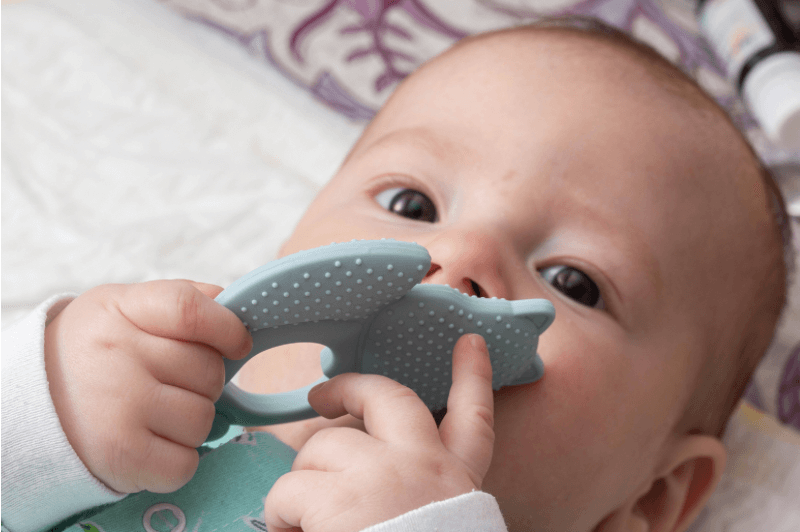Teething is an important phase in a baby’s development, marked by the emergence of the first teeth. Although it’s a natural milestone, it can be uncomfortable for the child, causing gum irritation, increased salivation, and sometimes changes in sleep and appetite. Teethers and specific toys can be useful tools to alleviate this discomfort. This article explores the available options and offers tips for choosing the safest and most effective products.
Types of Teethers
There are various types of teethers available on the market, each with specific features to meet different needs during the teething phase.
• Silicone Teethers: Soft and flexible, providing gentle relief for irritated gums.
• Refrigerated Teethers: Can be placed in the refrigerator to provide cooling and soothing relief.
• Fabric Teethers: Made of natural materials, they can be moistened and chilled for a refreshing effect.
• Textured Teethers: Have varied surfaces to massage the gums and stimulate the teething process.
Toys for Teething
In addition to traditional teethers, there are toys designed specifically to relieve the discomfort of teething.
• Plush Toys with Parts to Chew: Combine the softness of a plush toy with safe chewing parts.
• Cloth Books with Chewable Corners: Provide entertainment and relief simultaneously.
• Safe Bath Toys to Chew: Offer fun during bath time and relief for the gums.
Safety First
When choosing teethers and toys for your baby, safety should be the top priority.
• Check the Recommended Age: Make sure the product is suitable for your baby’s age.
• Safe and Non-Toxic Materials: Choose products made from safe materials, free from BPA and other harmful substances.
• Avoid Small Parts: Ensure that the teether or toy does not have small parts that could detach and pose a choking risk.
• Hygiene: Choose products that are easy to clean and follow the manufacturer’s hygiene instructions.
Tips for Easing Teething Discomfort
• Gum Massage: Use a clean finger to gently massage the baby’s gums.
• Keep the Chin Dry: Regularly dry the baby’s chin to prevent skin irritations caused by excessive drooling.
• Offer Cold Foods: If the baby is already in the solid food stage, offer cold foods like chilled fruit pieces in a mesh feeder.
When to Seek a Doctor
While teething is a natural process, in some cases, it may be necessary to seek a doctor’s guidance.
• High Fever: Teething can cause a slight rise in temperature but should not cause high fever.
• Prolonged Diarrhea: While some babies may have softer stools during teething, prolonged diarrhea should be assessed by a doctor.
• Extreme Irritability: If the baby is extremely irritable and nothing seems to relieve the discomfort, consult a doctor.
Conclusion
Teething is a challenging phase for both the baby and the parents. Specific teethers and toys can offer relief and comfort, but it’s crucial to choose safe products and follow proper hygiene practices. Observing the baby and providing support and comfort during this period is essential.
Disclaimer
The information presented in this article is purely informative and intended to provide general guidelines on how to alleviate teething discomfort using teethers and toys. This article is not intended to replace professional guidance, diagnosis, or treatment. If you have questions or concerns about your child’s teething, it is essential to seek the guidance of a health professional. No information in this article can replace the knowledge and judgment of a health professional.
